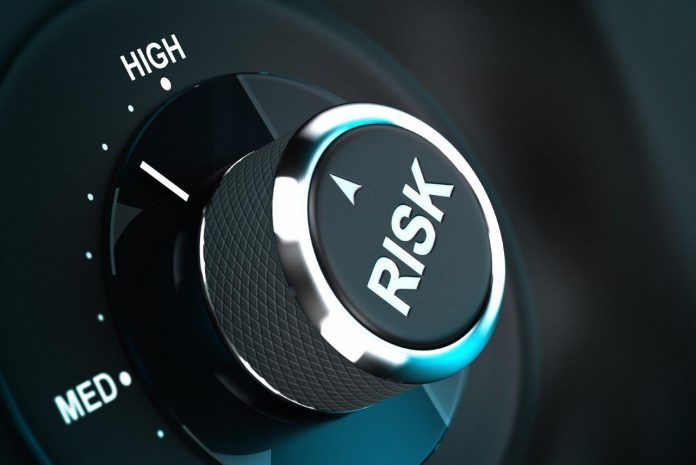Securing fixed assets is pretty much a text book affair; establish concentric security barriers around the asset, which increase in ‘hardness’ the closer they are installed to the item of value.
WHEN you are protecting attractive and portable assets, the rule of thumb is if you are not using it, keep it locked down; classic Defence-in-Depth. However, it’s a different story when the object requiring protection needs to remain portable and even more difficult when it is mobile. Such protective security challenges require solutions that are often technology dependent (tech-heavy), focusing on improving detection and assisting the security response with plenty of up-to-date information, on top of any deterrence and delay characteristics designed to discourage would-be perpetrators.
Imagine having the ability to know the real time whereabouts of all your portable assets, and be alerted to conditions that might indicate a problem, whenever an asset makes an unexpected move. A range of technologies and systems designed to permit this degree of situational awareness are readily available, although it can come at substantial cost and complexity if you are not careful. Knowing what you really need to monitor and under what conditions, will help to maximise effectiveness and minimise unnecessary capital outlay towards your chosen solution.
Keeping an eye on portable assets within buildings is fairly straight forward. Data projectors, laptops and small, high value objects have a bad habit of disappearing, especially in places like hospitals and universities. Where the asset is normally static, such as a data projector mounted to a ceiling, a simple break/no break detector (such as a surface mounted reed switch or close proximity detector) can be attached to it and hardwired back to the alarm panel; removal of the device will break the monitoring circuit and cause an alarm. This is a cheap and cheerful, although not very intelligent, solution.
Some attractive assets within buildings are a lot more portable, and so require a different approach – usually employing wireless technologies. For example, where hospitals provide care for high risk patients (infants, elderly and/or mental health), it is possible to implement an active patient wandering system; otherwise known as an asset tracking system. These systems require an active (battery powered) tag to be attached as a wrist or leg band to the patient and the location of this tag is periodically transmitted to the hospital’s security management system via ceiling or doorway mounted receivers.
Radio frequency triangulation is a common locating technique; however some tags use multiple technologies to improve accuracy, especially infra-red, which helps to narrow locations down to discrete rooms. The same tags can also be attached to employees or high risk physical assets as well, although care needs to be taken with regards to privacy laws surrounding workplace surveillance obligations for employers and also the limitations apparent with only being able to track assets whilst they remain within the building.
Electronic article surveillance
Retailers and librarians have been monitoring their stock with electronic article surveillance (EAS) systems for decades. These systems use fairly simple technologies; magnetic, acousto-magnetic and radio frequency based systems are common place and have been proven to be highly effective towards improving retail loss prevention. Most people will be familiar with the vertical gates at store fronts, and the need to have the shop assistant deactivate or remove the EAS tag at the point-of-sale before leaving the store.
While these devices are quite robust, they are prone to defeat by skilled shop lifters and at times create nuisance alarms for legitimate shoppers. It is for these reasons that you may also see a security guard at the store front supervising customers entering and exiting. Nevertheless, the technology is relatively cost efficient and a proven crime reducing practice.
“Imagine having the ability to know the real time whereabouts of all your portable assets, and be alerted to conditions that might indicate a problem, whenever an asset makes an unexpected move”
Geo-location is a growing trend that is more than using simple global positioning systems. The procedure usually involves the use of multiple technologies including GPS, as well as mobile phone, radar, or Wi-Fi to determine a meaningful location (such as a street address) of the asset rather than just a set of geographic coordinates, anywhere in the world.
The reliance on multiple locating technologies improves tracking accuracy and also provides a degree of redundancy should one of the technologies be rendered ineffective (such as loss of GPS signal when driving through a tunnel). This aggregated information is then displayed to the operator at a remote security monitoring centre using a map based user interface.
Once near real-time, geo-location information is obtainable, rules can be set up to create alarms when unexpected events occur. For example, if a mobile asset on a truck stops unexpectedly, or travels outside of a pre-planned route, this would be detected with an alarm raised to prompt an appropriate response by the monitoring operator.
Probably one of the most promising technologies is the rapid expansion in the availability and effectiveness of tracking apps now available for smart phones and tablets. Why bother investing in a completely new asset tracking system when the mobile phone can do it all for you? Not to mention that everyone carries one on their person almost all the time these days. Tracking apps use the internal cellular, Wi-Fi and GPS sensors to accurately report location details; usually uploading information to the cloud and allowing restricted access to another smart device or prearranged and trusted third party.
These apps are extremely handy; especially when you misplace your device and use the service to ‘Find My Phone’. However, it could be argued that perhaps consumers are not yet ready to divulge such specific and personal information to employers, government agencies or other third parties for fear of unwanted oversight and that always worrying concept of Big Brother. In any case, watch this space for innovative location-based systems in the coming years.
Building a strong business case to support the implementation of systems that protect attractive and portable assets can be challenging because there is a need to demonstrate an acceptable Return on Investment (ROI).
Putting a dollar value on the benefits (in terms of preventable losses) can be tricky; especially if historic information about previous events is patchy or incomplete.
A better way might be to connect with industry peers operating similar businesses, and share information about security incidents and loss prevention strategies. This will help to benchmark your position against industry norms; providing confidence to yourself and your management cohort that the proposed solution has merit. If in doubt, seek independent, professional advice to ensure all options have been considered and the best outcome is presented.
Shane Norton is an Associate and the Protective Security Leader for Arup in Australasia. He is also a SCEC Approved Security Zone Consultant. Contact on (02) 9320 9305 or shane.norton@arup.com









